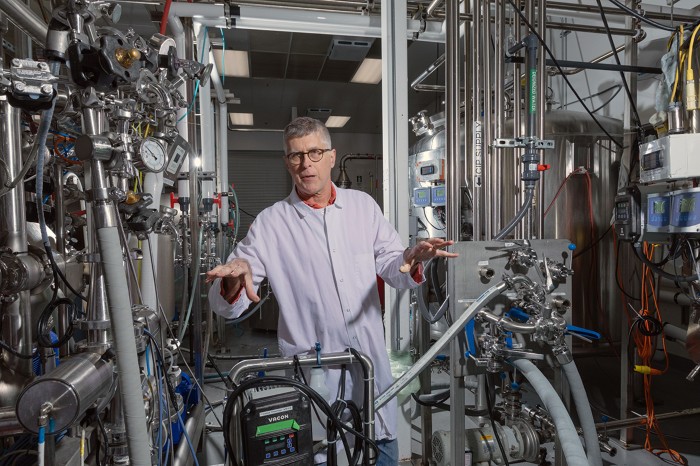Meet the food pioneer whose meat replacements are rocking the gravy boat

Patrick Brown is the founder and chief executive of Impossible Foods in Redwood City, California. Credit: Peter Prato
The use of animals for mass food production is the most destructive technology on Earth: the number of wild mammals, birds, reptiles, amphibians and fish worldwide is less than one-third of what it was 50 years ago because so much land has been converted to pasture or farmland to feed livestock.
Our only realistic chance of reversing climate change is to replace the animal-farming industry. In 2009, when I was a biochemist at Stanford University in California, I was interested in meat replacements. So I started an 18-month sabbatical to work out how I could make the biggest positive impact on humanity and the planet. In 2011, I founded Impossible Foods, a company based in Redwood City, California, that competes with the meat industry. I am now emeritus at Stanford.
At Impossible, we try to deliver what consumers value in animal products, but in a more sustainable way. Most of that is easy: we can match the nutritional value of any type of meat, for about one-twentieth of the cost, using readily available plant ingredients. The hard part is making our food taste delicious. And that’s where haem comes in. Haem is the part of the haemoglobin molecule that contains iron: it’s haem that turns the amino acids, sugars, fats and vitamins in food into an explosion of flavours and aromas.
We make our own haem molecules by using genetically modified yeast to produce soy leghaemoglobin — the form of haemoglobin found in legumes.
In this photo, I’m at our pilot facility in Redwood City, where we optimize the fermentation and purification process for haem. My job is to wander around and talk to the scientists, share ideas and hear what they’re doing. I love tasting the prototypes. I’ve tried plant-based milk, Brie and fish and chips. We have a plant-based steak project.
We’re doubling the size of our research and development team this year, and whoever we recruit should feel able to be creative. That requires a fun environment.
Nature 590, 176 (2021)
